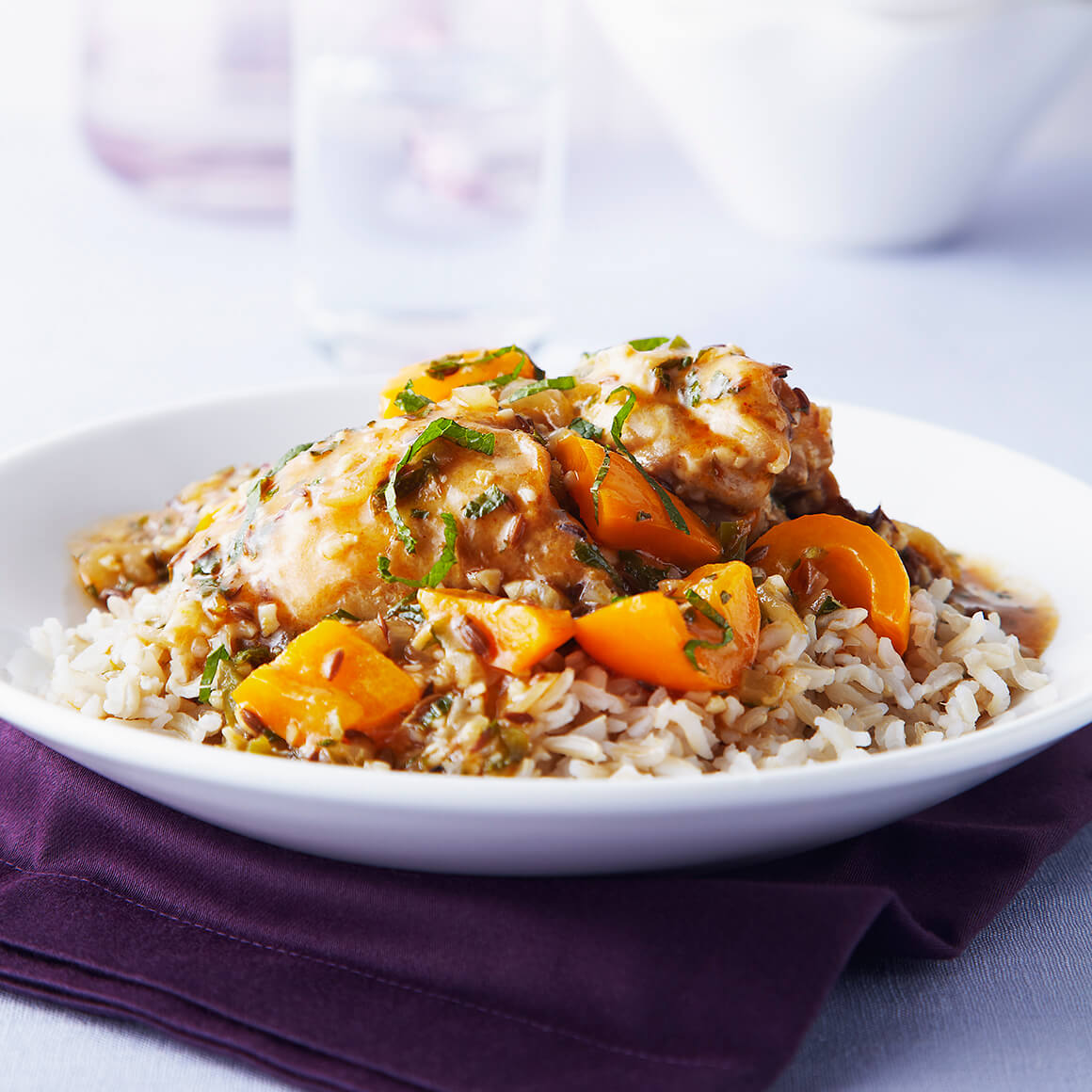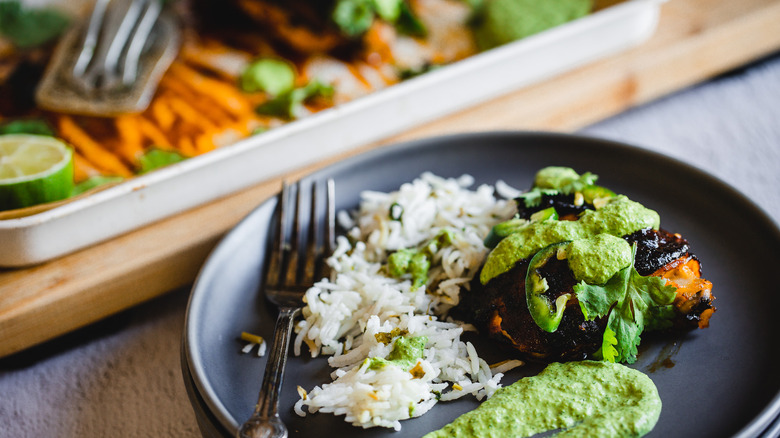Embark on a culinary journey to the heart of Peru, where flavors dance harmoniously in a vibrant symphony. Peruvian cuisine, renowned for its rich traditions and captivating blend of indigenous and international influences, holds a special place for chicken dishes.
In this exploration, we delve into the secrets of a classic Peruvian chicken recipe, unraveling its delectable ingredients, cooking techniques, and the vibrant side dishes that accompany it.
From the bustling markets of Lima to the charming villages nestled amidst the Andes, Peruvian chicken has captivated taste buds for centuries. Its succulent meat, infused with a tantalizing blend of spices and herbs, has earned it a prominent position in the culinary landscape of Peru and beyond.
Peruvian Chicken Recipe
Peruvian Cuisine and Chicken Dishes
Peruvian cuisine is a vibrant and diverse culinary tradition that blends indigenous, Spanish, and other cultural influences. It is known for its use of fresh ingredients, bold flavors, and a variety of cooking techniques.
Chicken dishes hold a special place in Peruvian gastronomy. They are found in a wide range of preparations, from traditional stews to grilled and roasted specialties. Peruvian chicken is renowned for its succulent meat, flavorful marinades, and unique spice blends.
Ingredients for a Classic Peruvian Chicken Recipe
A classic Peruvian chicken recipe is a flavorful and aromatic dish that embodies the vibrant culinary traditions of Peru. The key to its distinct taste lies in the carefully selected ingredients that blend together to create a harmonious balance of flavors.
The essential ingredients for a traditional Peruvian chicken recipe include:
Whole Chicken
The foundation of the dish is a whole chicken, typically weighing around 3-4 pounds. It is essential to choose a free-range or organic chicken for optimal flavor and texture.
Ají Panca Paste
Ají panca paste is a staple ingredient in Peruvian cuisine. Made from dried red peppers, it adds a deep red color and a slightly smoky, fruity flavor to the chicken.
Cumin
Cumin is a warm and earthy spice that adds depth and complexity to the marinade. It helps to balance the heat from the ají panca paste.
Garlic
Fresh garlic is a key aromatic ingredient that provides a pungent and savory flavor. It is typically minced or crushed before being added to the marinade.
Salt and Pepper
Salt and pepper are essential seasonings that enhance the natural flavors of the chicken. They should be used generously to taste.
Other Optional Ingredients
Additional ingredients that can be added to the marinade for extra flavor include:
- Onion
- Vinegar
- Oregano
- Bay leaves
Preparing the Chicken

To prepare the chicken for Peruvian-style cooking, several techniques are essential to achieve the desired flavor and tenderness.
The first step involves marinating the chicken. This process involves soaking the chicken in a flavorful liquid, typically a mixture of herbs, spices, and acidic ingredients like vinegar or citrus juice. Marinating allows these flavors to penetrate the chicken, resulting in a more flavorful and juicy dish.
Seasoning the Chicken
After marinating, the chicken should be seasoned generously with salt and pepper. This step enhances the natural flavor of the chicken and balances the acidity of the marinade.
Trussing the Chicken
Trussing the chicken involves tying the legs and wings together to maintain its shape during cooking. This technique helps ensure even cooking and prevents the chicken from becoming misshapen.
Cooking Methods for Peruvian Chicken

Peruvian chicken can be cooked using various methods, each imparting unique flavors and textures to the dish. The most common methods include roasting, grilling, and frying, with each offering its own set of advantages and disadvantages.
Roasting
Roasting involves cooking the chicken in an oven at high temperatures. This method yields a succulent and flavorful chicken with a crispy skin. The roasting time depends on the size of the chicken, but typically ranges from 1 to 2 hours.
One advantage of roasting is that it allows for even cooking throughout the chicken, resulting in a tender and juicy interior.
Grilling
Grilling is a popular method for cooking Peruvian chicken. It involves cooking the chicken over direct heat, typically on a grill or barbecue. This method imparts a smoky flavor to the chicken and creates a slightly charred exterior. Grilling is a relatively quick cooking method, with most chickens taking around 30 to 45 minutes to cook.
However, it requires careful monitoring to prevent the chicken from burning.
Frying
Frying involves cooking the chicken in hot oil. This method produces a crispy and golden-brown exterior, while the interior remains moist and tender. Frying is a quick and easy cooking method, with most chickens taking around 15 to 20 minutes to cook.
However, it is important to use a high-quality oil with a high smoke point to prevent the chicken from absorbing excess fat.
Side Dishes for Peruvian Chicken
Peruvian chicken is often served with a variety of side dishes that complement its flavors and enhance the overall dining experience. These side dishes typically include rice, potatoes, and salads.Rice is a staple side dish in Peruvian cuisine and is often served with Peruvian chicken.
The rice is usually cooked with chicken broth and vegetables, giving it a flavorful and moist texture. Potatoes are another popular side dish for Peruvian chicken. They can be boiled, mashed, or fried, and are often served with aji sauce, a spicy Peruvian condiment.
Salads are also a refreshing and healthy side dish for Peruvian chicken. They can be made with a variety of greens, vegetables, and fruits, and are often dressed with a light vinaigrette or citrus juice.
Aji Sauce
Aji sauce is a spicy Peruvian condiment made from aji peppers, onions, garlic, and lime juice. It is often served with Peruvian chicken and adds a flavorful kick to the dish. Aji sauce can also be used as a marinade for chicken or fish, or as a dipping sauce for appetizers.
Variations and Adaptations of Peruvian Chicken
Peruvian chicken has become a beloved dish worldwide, and its popularity has led to a myriad of variations and adaptations. These variations showcase the diverse culinary heritage of Peru and the creativity of modern chefs.
Regional Variations
Peruvian chicken recipes vary from region to region, reflecting the unique ingredients and flavors found in different parts of the country. In the northern region, for instance, chicken is often marinated in chicha de jora, a fermented corn beverage, which imparts a slightly sweet and tangy flavor.
In the central region, chicken is typically seasoned with aji panca, a spicy red pepper paste, and huacatay, a flavorful black mint. In the southern region, chicken is often cooked with rocoto peppers, which add a fiery heat to the dish.
Modern Adaptations
Modern adaptations of Peruvian chicken have emerged in recent years, showcasing innovative cooking techniques and flavor combinations. Chefs have experimented with marinades made from exotic fruits like passion fruit and mango, and have incorporated international flavors such as Asian spices and Mediterranean herbs.
Some chefs have even taken the classic Peruvian chicken dish to new heights by cooking it sous vide or grilling it over exotic woods.
Presentation and Serving Techniques
Peruvian chicken is traditionally presented as a whole roasted bird, with the skin a crispy golden brown. The chicken is often served with a variety of garnishes, such as sliced onions, tomatoes, and cilantro, as well as sauces, such as aji amarillo or huancaína sauce.
The presentation of the dish is an important part of the dining experience, as it enhances the appeal and enjoyment of the meal.
Garnishes
The garnishes used in Peruvian chicken dishes play an important role in enhancing the flavor and visual appeal of the dish. Sliced onions and tomatoes add a fresh, acidic contrast to the richness of the chicken, while cilantro provides a herbaceous aroma and flavor.
Other common garnishes include lettuce, avocado, and boiled potatoes.
Sauces
Peruvian chicken is often served with a variety of sauces, each of which adds its own unique flavor to the dish. Aji amarillo sauce is a spicy, creamy sauce made from yellow chili peppers, while huancaína sauce is a creamy, cheesy sauce made from yellow chili peppers, cheese, and evaporated milk.
Other popular sauces include salsa criolla, a fresh tomato salsa, and chimichurri, a herbaceous sauce made from parsley, cilantro, and garlic.
Nutritional Value and Health Benefits
Peruvian chicken, a culinary delight from the Andean highlands, offers a delectable blend of flavors and impressive nutritional value. It is a rich source of protein, essential for building and repairing body tissues, maintaining muscle mass, and supporting overall growth and development.
In terms of fat content, Peruvian chicken is a relatively lean protein source, containing less saturated fat than many other types of poultry. It is also a good source of monounsaturated and polyunsaturated fats, which have been linked to improved heart health and reduced risk of chronic diseases.
Vitamin Content
Peruvian chicken is a treasure trove of vitamins, including vitamin A, vitamin C, and B vitamins. Vitamin A plays a crucial role in vision, immune function, and cell growth. Vitamin C is an antioxidant that helps protect cells from damage, while B vitamins are essential for energy production, nerve function, and red blood cell formation.
Health Benefits
The nutritional profile of Peruvian chicken makes it a potential ally for maintaining good health. Its low cholesterol content makes it a heart-friendly choice, while its high protein content promotes satiety and supports muscle growth. Additionally, the presence of vitamins and antioxidants may contribute to overall well-being and disease prevention.
Closing Summary
Our exploration of the Peruvian chicken recipe has taken us on a delightful culinary adventure, unveiling the secrets behind its irresistible flavors. Whether you’re a seasoned chef or a home cook eager to expand your culinary horizons, this recipe offers a captivating fusion of tradition and innovation.
As you savor each bite, may the vibrant flavors of Peru transport you to the heart of this culinary paradise. ¡Buen provecho!
FAQ Corner
What is the significance of marinade in Peruvian chicken recipes?
Marinating the chicken is a crucial step in Peruvian chicken recipes. The marinade, often made with a blend of citrus juices, spices, and herbs, penetrates the meat, infusing it with a symphony of flavors. This process not only enhances the taste but also tenderizes the chicken, resulting in a succulent and juicy dish.
Are there regional variations of Peruvian chicken recipes?
Yes, Peruvian chicken recipes vary across different regions of the country. In the northern coastal regions, for example, chicken is often marinated in a spicy ají amarillo paste, while in the central Andes, it may be seasoned with aromatic herbs such as oregano and huacatay.
These regional variations reflect the diverse culinary traditions and flavors found throughout Peru.
What are some popular side dishes served with Peruvian chicken?
Peruvian chicken is typically accompanied by a variety of side dishes that complement its flavors. These may include steamed rice, boiled potatoes, or fresh salads. The rice absorbs the delicious juices from the chicken, while the potatoes provide a hearty and grounding element.
Salads, often made with fresh vegetables and a tangy dressing, add a refreshing contrast to the richness of the chicken.
